background
Many Fire TV customers suffer from decision and subscription fatigue and question whether "cutting the cord" is really a money-saver. They also love short-form videos-on-demand for quick entertainment and daily freshness, but can’t easily discover or quickly access this content on Fire TV. Short-form content was siloed inside various apps. PM had the idea to create several new "Fire Channels" to take advantage of this opportunity. Unfortunately, resources were very limited, so it was essential the Channels system could easily scale and adapt to different content types.
project goal
Design, present, and QA the front-end CX and a scalable infrastructure for unique content channels (essentially mini-apps). The original ask was to ship a single fitness channel, but this eventually grew to include four channels at launch.
my role: Design Manager
team: UX Designer, Visual Designer, UXPM, UX Researcher, three PMs
timeline: My team met every milestone on time, but due to significant scope creep and requirements churn, it took 2.5 years to launch v1.
headwinds
1) The Fire TV design team was at capacity, so I volunteered to pick up the project, recognizing the potential for success and scale. My team was also very busy, so I had to make do with a Jr. UX designer leading the effort. This designer left Amazon just as the project pivoted away from the Fitness channel in favor of Music Videos and Movie Trailers channels. I hired an L6 UX designer to act as lead designer moving forward.
2) The timelines were extremely aggressive for the initial launch: Fitness was going to be the first channel launched, with less than a year to ship.
3) The Fire Channel product was brand new, so the team was figuring things out at every step. BD needed designs to sell the product, but design needed some info/requirements to know what to include in designs—we didn’t know how long, or what quality, the videos would be.
4) A Sr. UX Designer on the Ads team had put a lot of effort into building the Movie Trailers Channel, but it required significant tweaking after my team took over.
early research and data gathering
Competitive analysis: Valuable insights regarding navigation were pulled from hugely successful short-form video providers, YouTube and TikTok. For fitness, popular fitness apps like Peloton and Beach Body provided insights into content filtering and organization.
To my knowledge, this was Amazon’s first attempt at launching a more snackable short-form video content platform. Ease of navigation was essential, and the expectation was that users would either jump around a lot between videos or “lean back” and allow the channel to auto-play personalized videos while keeping the UI hidden. There were minimal internal design patterns to lean on. I was asked to create a free video service that had clear Amazon connections, existed by default on Fire TV, and didn’t look too much like core Fire TV UI. To satisfy these needs, we created a new, scalable design pattern that maintained some familiarity with Fire TV and increased familiarity between each Fire Channel built.
The Music Video channel required a more unique approach. The business team planned to sign a deal with an existing 3P music video app headquartered in Europe. This required an intensive audit of their existing UX, prioritization of changes needed to map more closely with our core Fire Channels framework, and frequent meetings to discuss and check in on their progress.
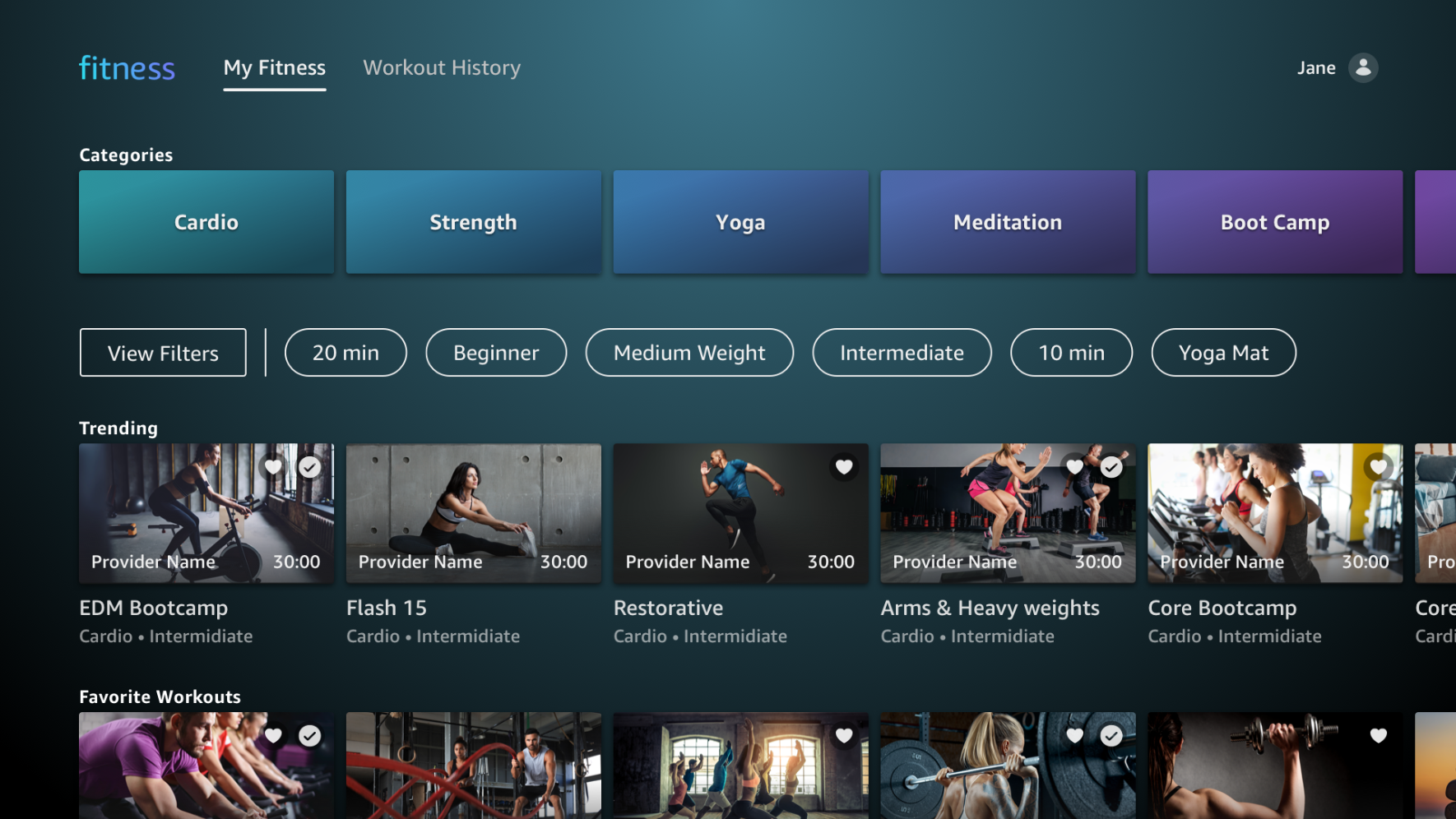
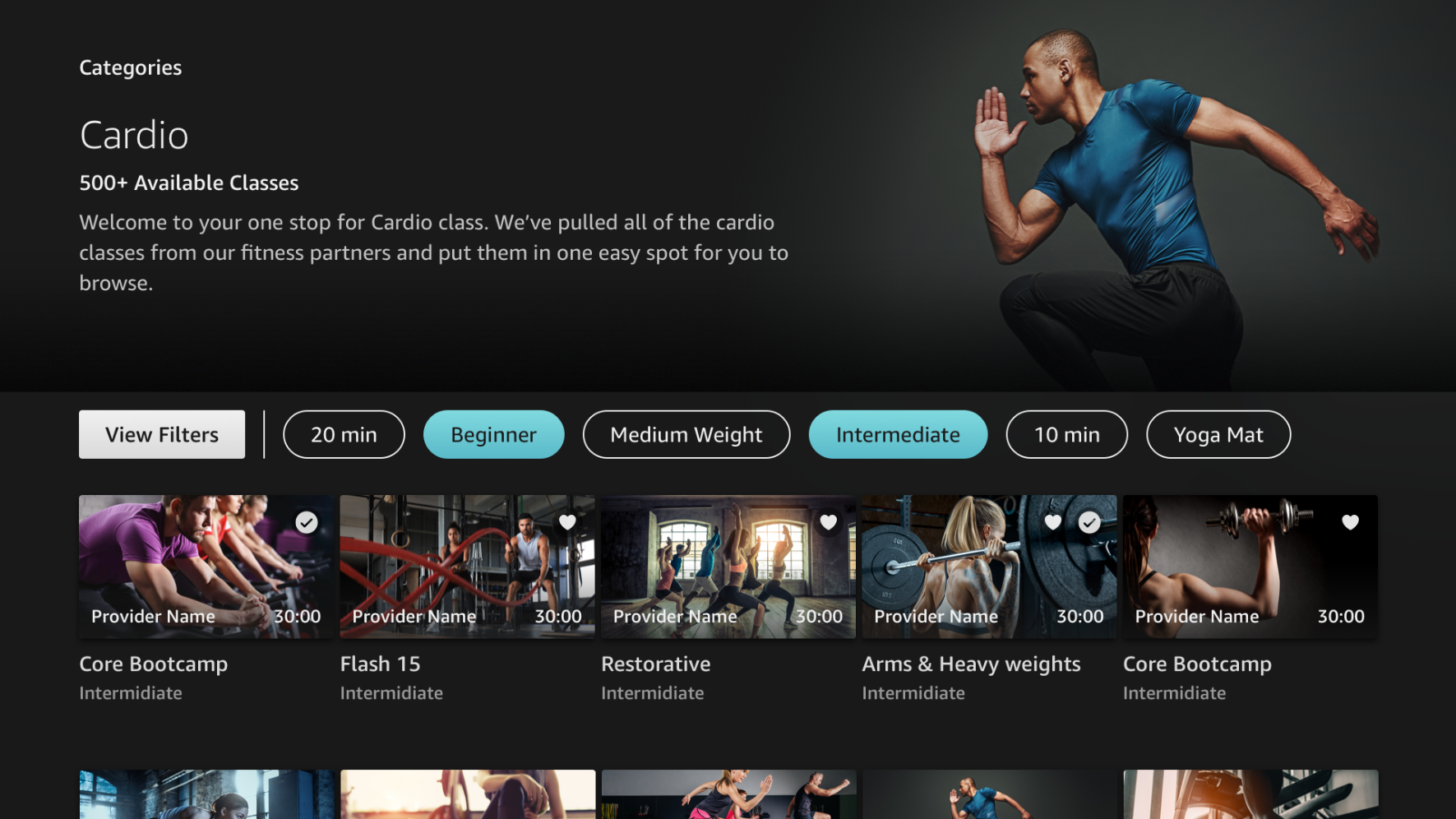
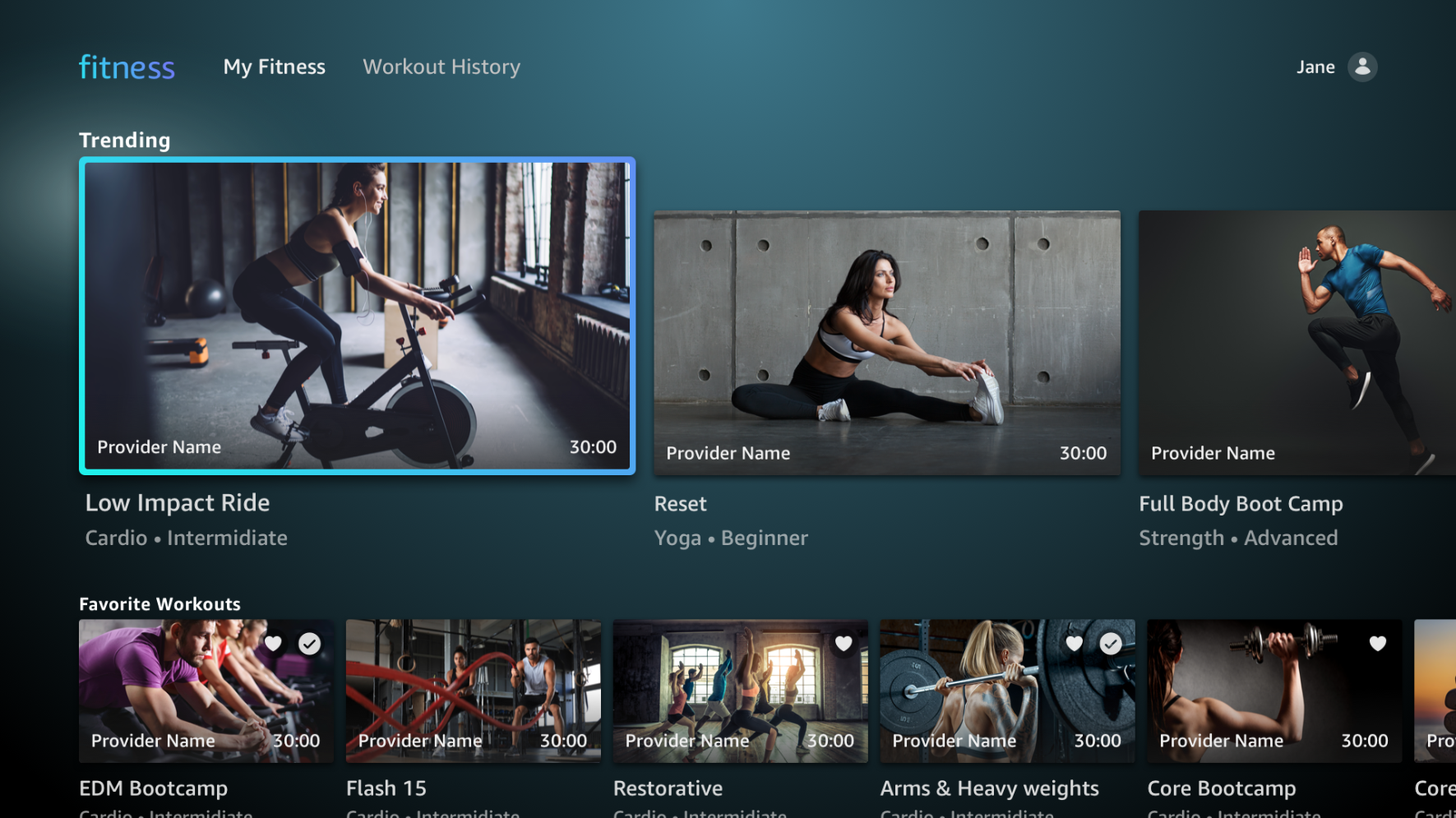
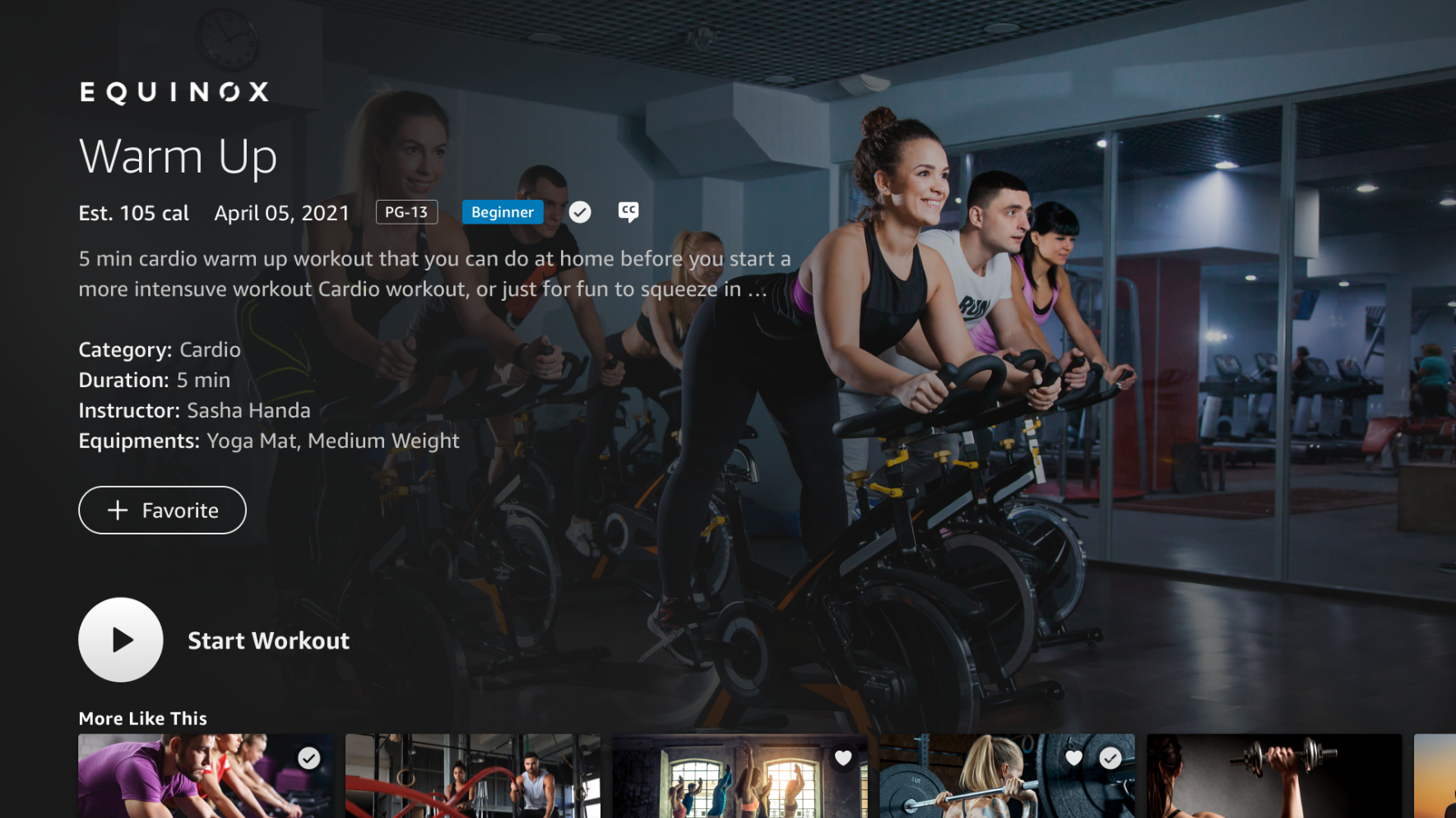
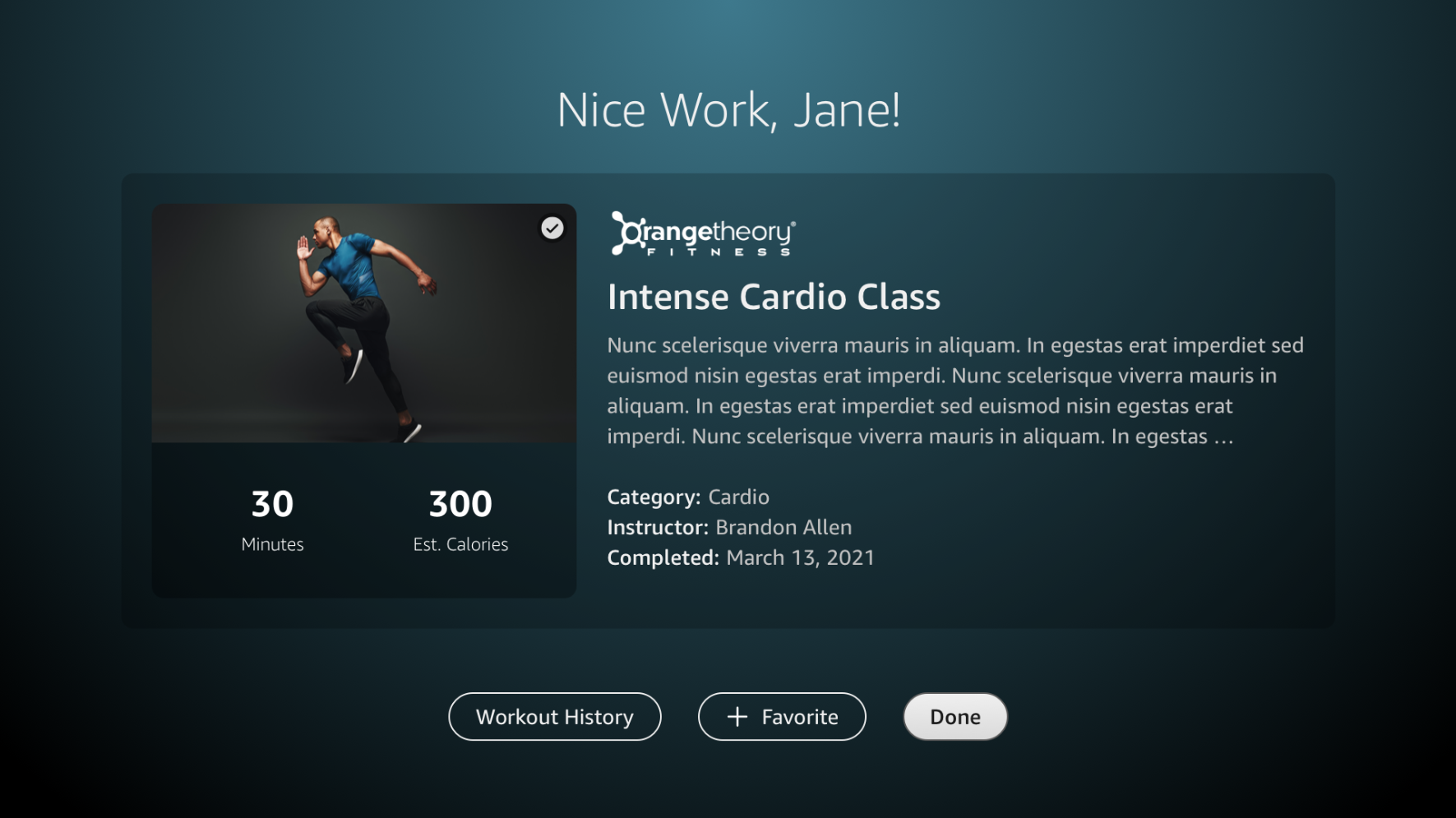
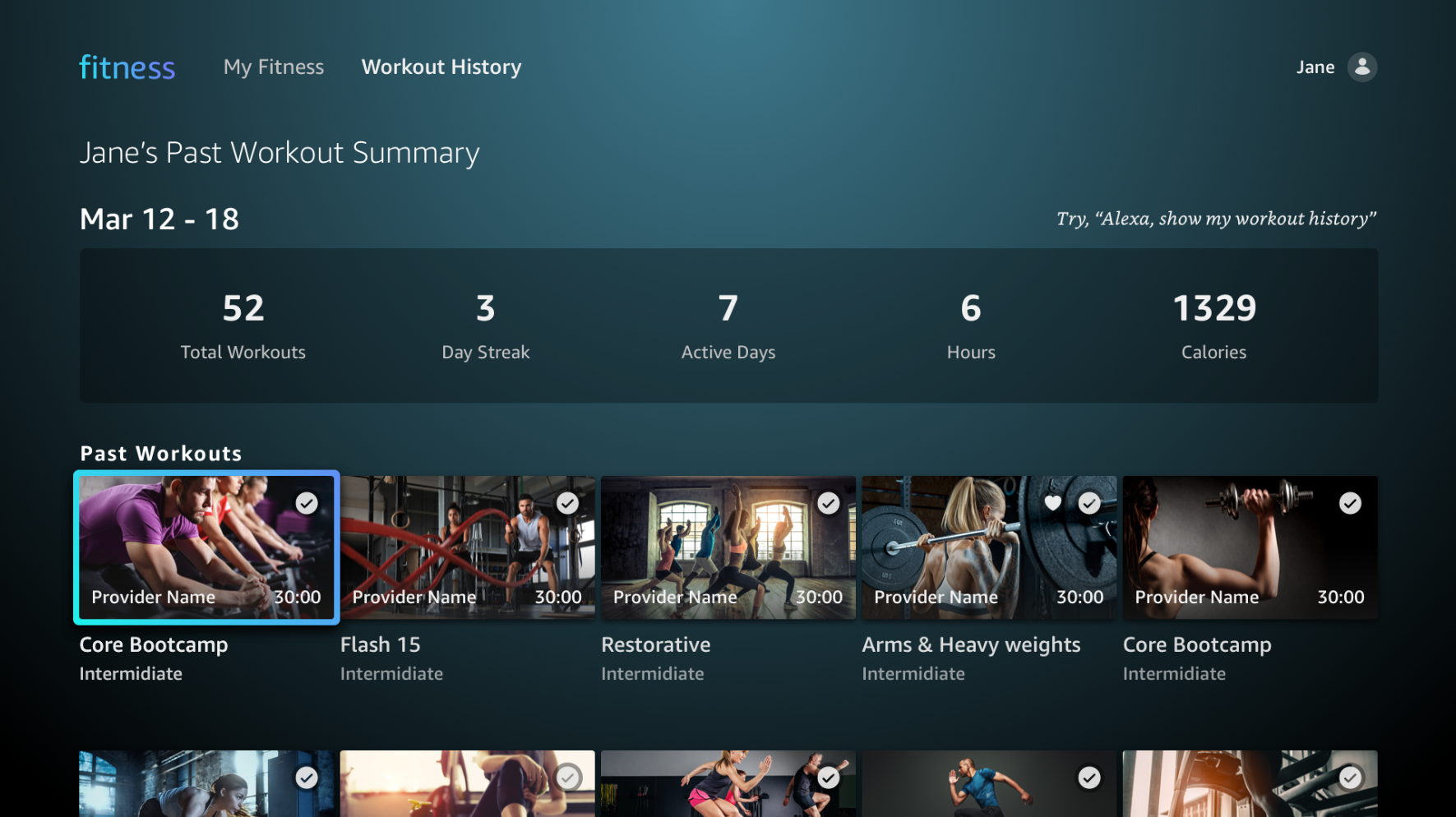
Designs for the Fitness Fire Channel, prior to its deprioritization.
testing/feedback
Just before feature completion, Fire TV UXR conducted a moderated, in-person usability study to evaluate early navigation and interaction design concepts for Fire Channels. Performance evaluation was done by measuring customer satisfaction and task completion for a set of predetermined tasks. Executive summary:
Overall, participants didn’t have much trouble navigating the nav bar and browse pages to locate content, although they described having a dedicated Search within Fire Channels would bolster the overall content discovery experience. Participants had difficulty with interactions like returning to watch the most recent video, navigating the player chrome, and controlling playback (rewind/fast forward). For favoriting, participants didn’t have any issues adding channels, but they struggled with locating all their favorited channels after doing so.
Fire Channel IA and navigation flow.
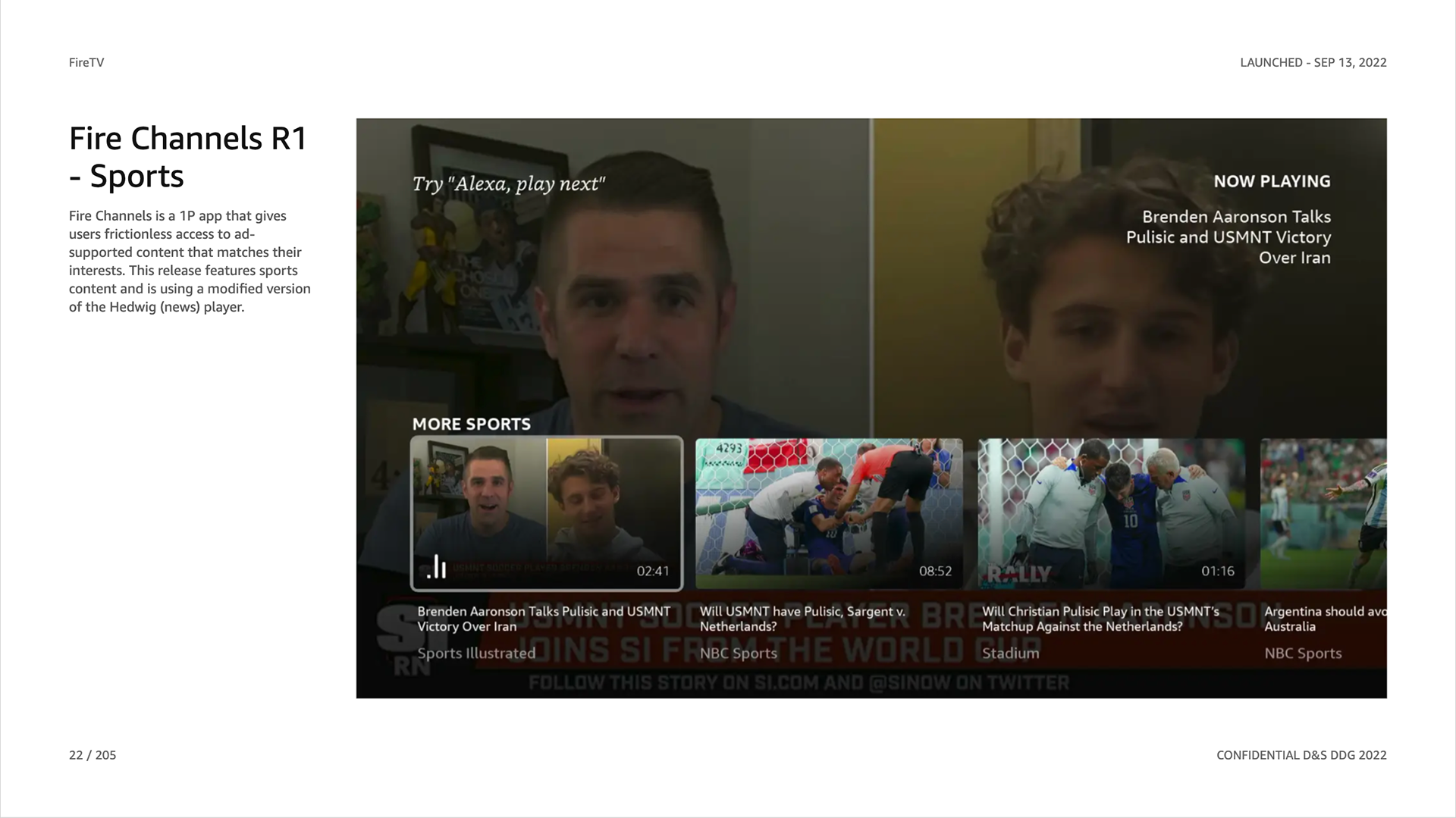
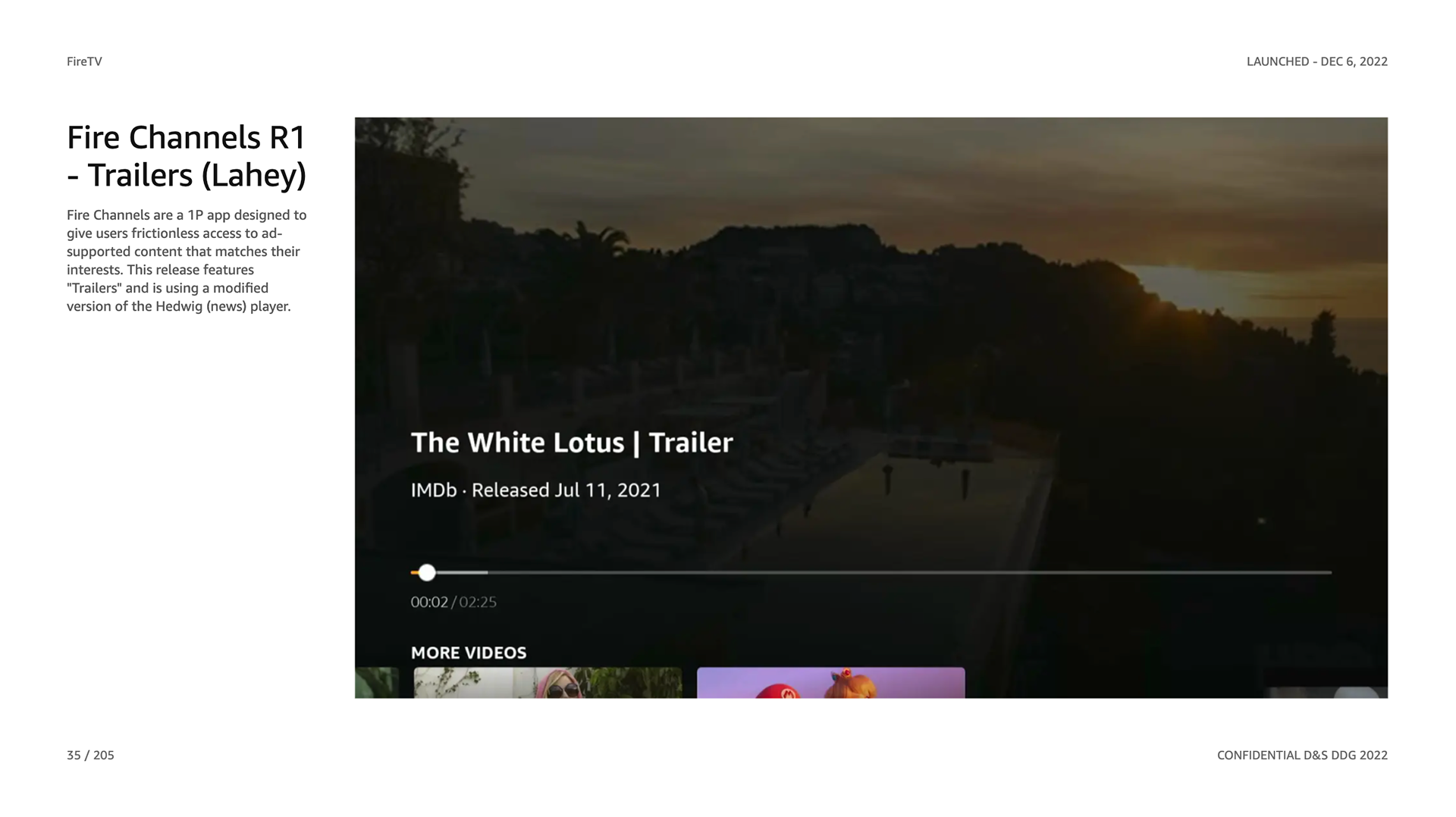
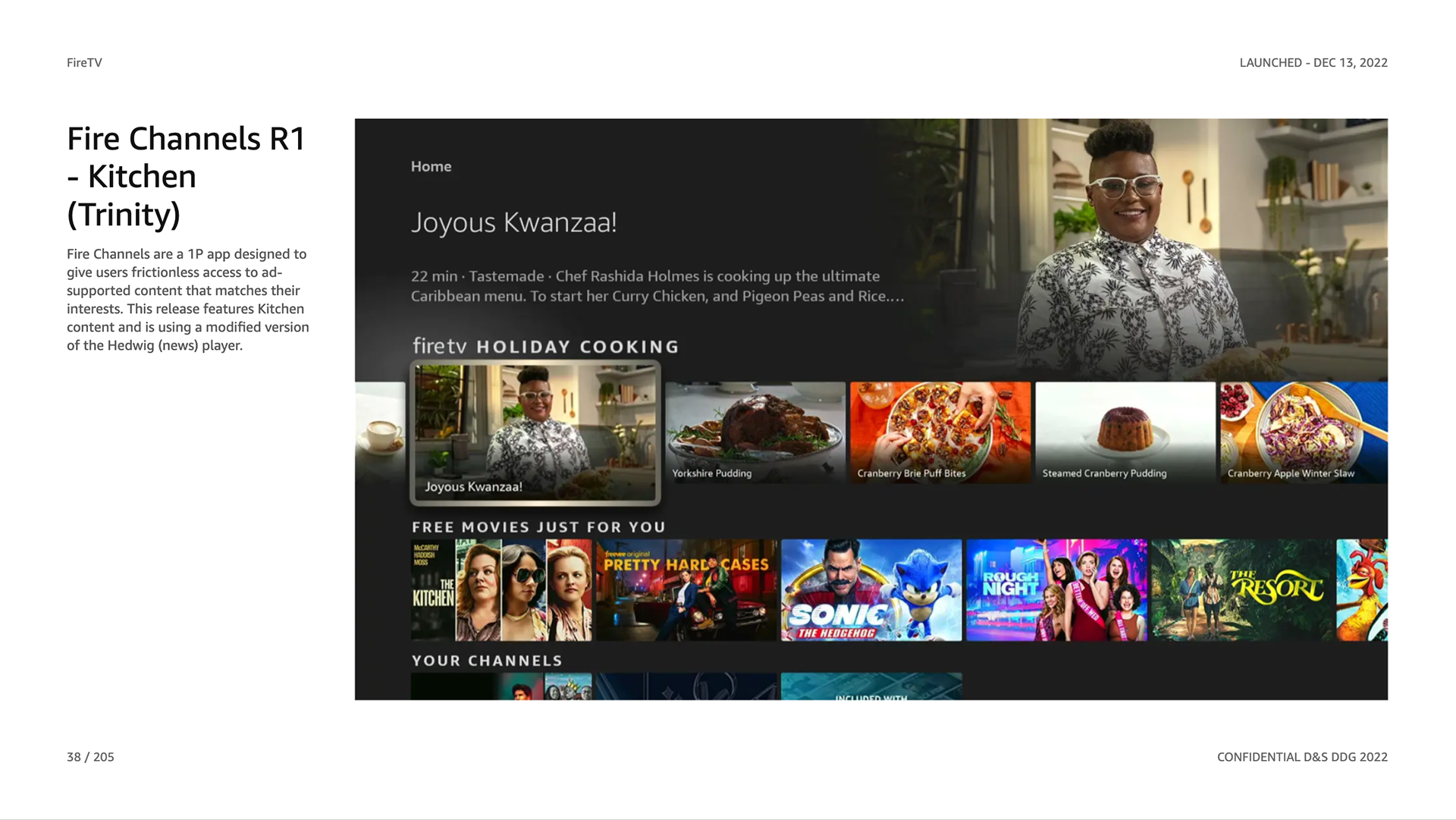
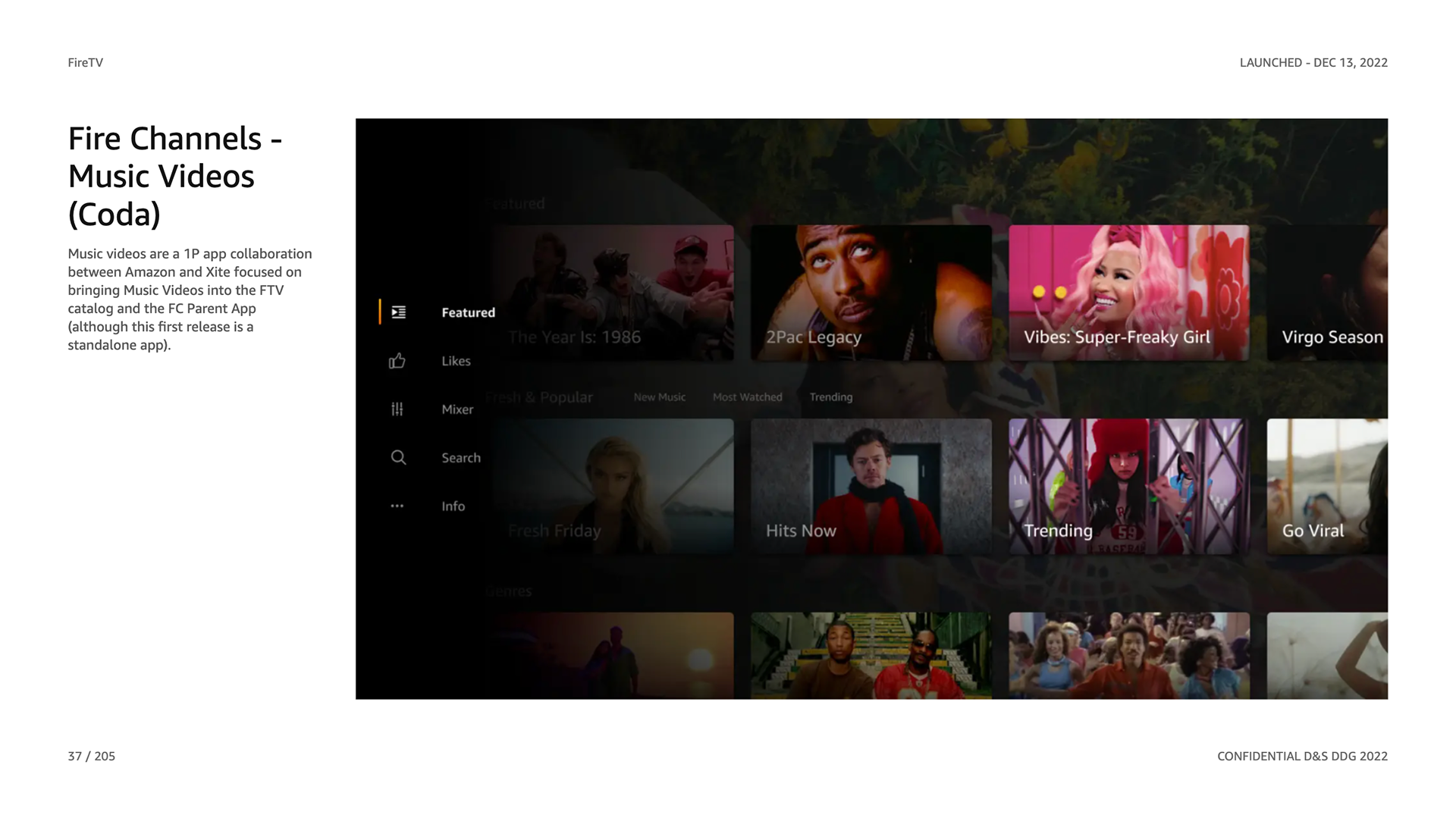
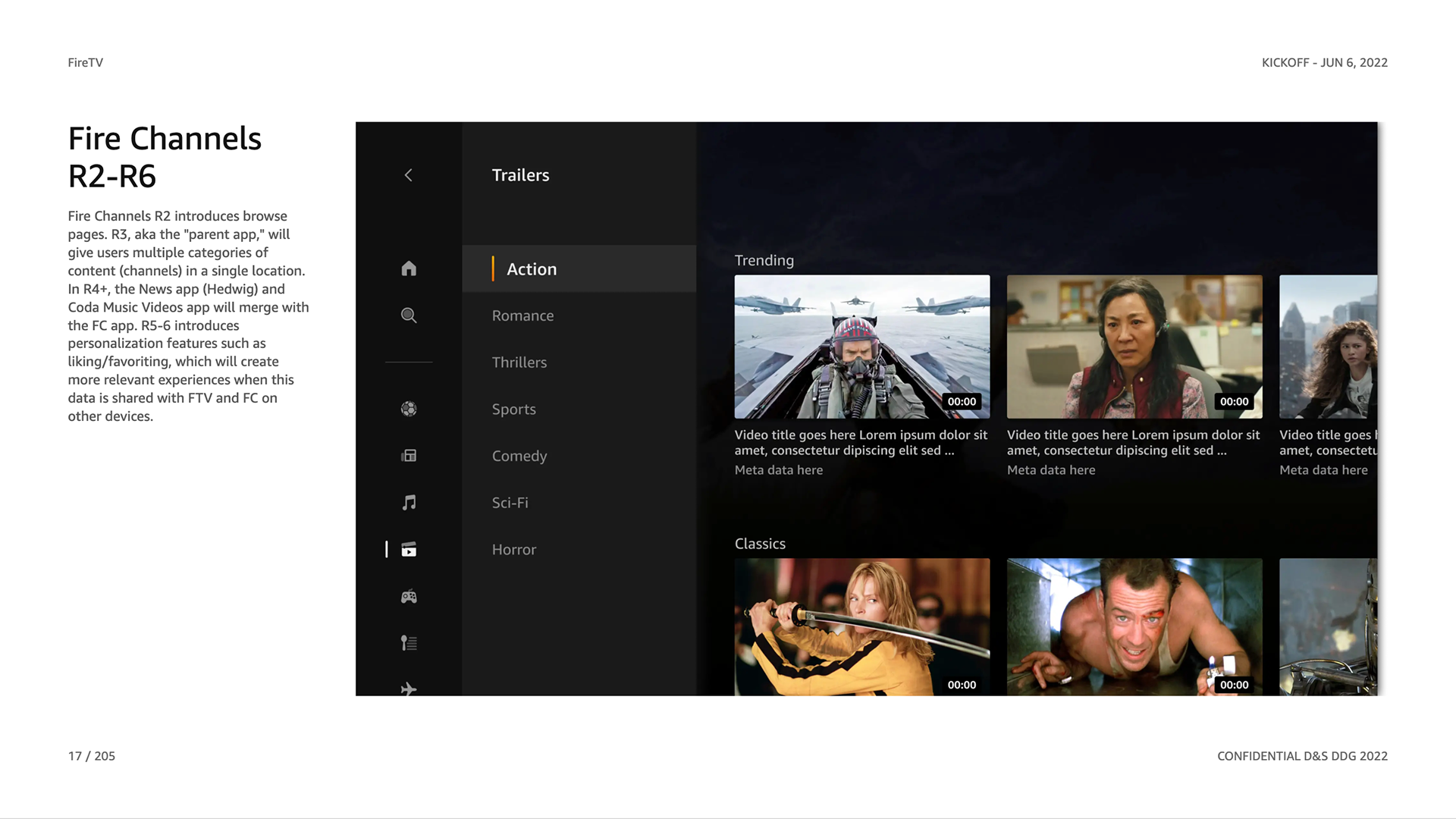
results
New cooperative partnerships with PM and Engineering were built and strengthened. Leadership was very happy with the Channels experience my team designed. Fire TV Channels were successfully launched in Q3 of 2023, with data from early 2024 indicating they’re one of the most effective and lucrative mechanisms for monetization on Fire TV today.
Final Fire Channel designs, post-launch.
learnings
This was one of the first major projects where my team exclusively used Figma. In particular, the ability to easily and quickly prototype proved to be incredibly helpful throughout the design process and in leadership reviews.
